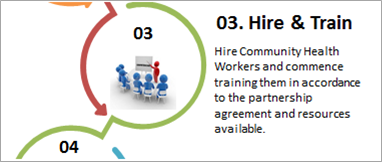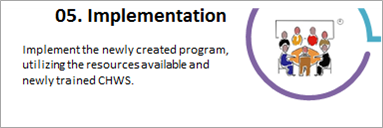
LINKS
“Linking Individual Needs to Community and Clinical Services”
In this guide we describe “LINKS,” a community health worker (CHW) model program designed to create a continuum of services between primary care and community services. LINKS is based on two important concepts:
- Public health and health care organizations must work together to address the social, economic and political conditions that contribute to clinical outcomes.
- Community health workers (CHWs) in community settings are optimally situated to leverage and support the engagement of resources across sectors to meet diverse needs of their clients.
The LINKS intervention has four phases:
- Recruitment: CHWs invite patients of a partner FQHC or other community members from their program to join the LINKS program.
- Registration and assessment: LINKS CHWs identify participant priorities and tailor the LINKS intervention to their needs. The CHW refers participants to programs and services. If needed, the CHW offers to accompany them to appointments, translates information, or assists in making phone calls.
- Monthly follow up: The LINKS CHW ensures that the participant has accessed any needed resources and refers them to additional services.
- Final six-month visit: The LINKS CHW and participant assess their experience.
Click on the following tiles below to learn more about each step:

The Arizona Prevention Research Center has created the following infographic to visually depict results from the LINKS projects. To download the 2-page PDF please click on the icon. This publication Is a product of a Health Promotion and Disease Prevention Research Center supported by Cooperative Agreement Number U48DP005002 from the Centers for Disease Control and Prevention. The findings and conclusions in this publication are those of the authors and do not necessarily represent the official position of the Centers for Disease Control and Prevention.









